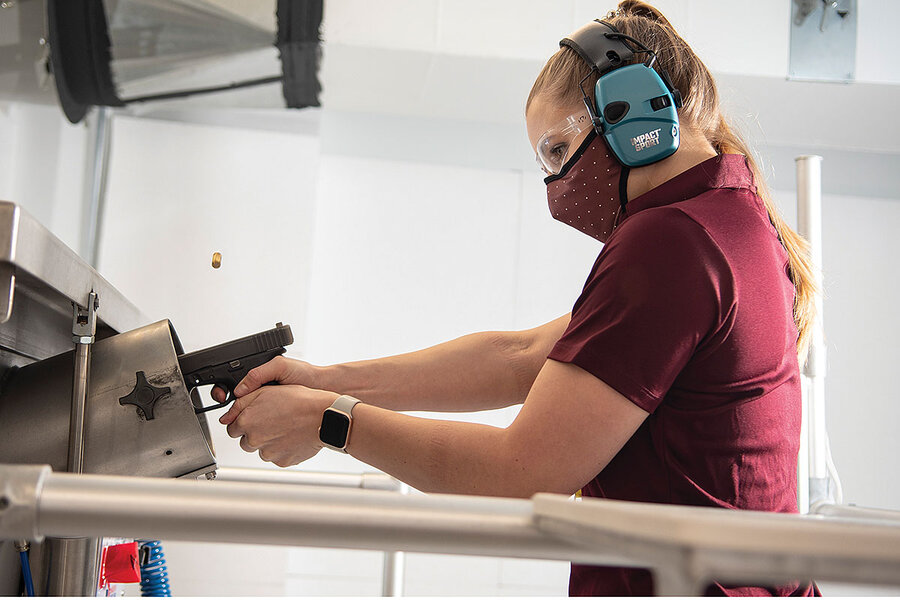As seen on TV? The real promise of forensic science.
Loading...
What is it about crime shows? After a long day, millions of people unwind by delving into the grisly details of a horrific crime. Some observers argue that these shows appeal because they invite viewers to explore the baser side of humanity from a safe distance.
Perhaps. But such programs also show another side of humanity: the undeterred pursuit of truth. For every depraved criminal depicted, dozens of detectives, prosecutors, and forensic investigators toil to find justice. There’s something comforting, if not overly simplistic, in that idea.
In the April 26 cover story, Henry Gass introduces readers to some of the real-life professionals investigating such crimes. Like any good police procedural, there are good guys and bad guys – and they don’t necessarily sit on the expected side of the fence.
Crime dramas have been around since the early days of television. The world’s first whodunit, “Telecrime,” aired live in Britain in 1938. A decade later, “The Plainclothesman,” the first American police procedural, put viewers in the shoes of an unnamed lieutenant as he solved crimes in tidy 30-minute episodes.
The genre has since become ubiquitous, with shows about law enforcement making up nearly 20% of all scripted programming in the 2019-20 network television season. That’s not to mention the endless array of cable and streaming offerings.
This steady diet of crime dramas has left many viewers with a distorted view of the justice system. On screen, state-of-the-art crime labs regularly produce definitive forensic evidence in a matter of hours, inflating the public’s expectations. One survey found that nearly half of jurors expect every criminal case to include some kind of scientific evidence. In reality, most police departments do not have access to the kind of forensic analysis seen on TV. Even if they did, forensic science is never going to be as certain as screenwriters make it seem.
The public has discovered these limitations the hard way. Hundreds of convictions have been overturned due to faulty forensic evidence. Some forensic investigators and technicians have exploited public faith in their discipline to pass off shoddy work.
But in Houston, Henry introduces us to a forensic scientist leading the charge to lift his profession up to the standards that the public has come to expect. Peter Stout knows better than most how messy investigations can be. Perfection may never be a reasonable expectation, but he sees forensic science as the best tool for finding “a just result.”






